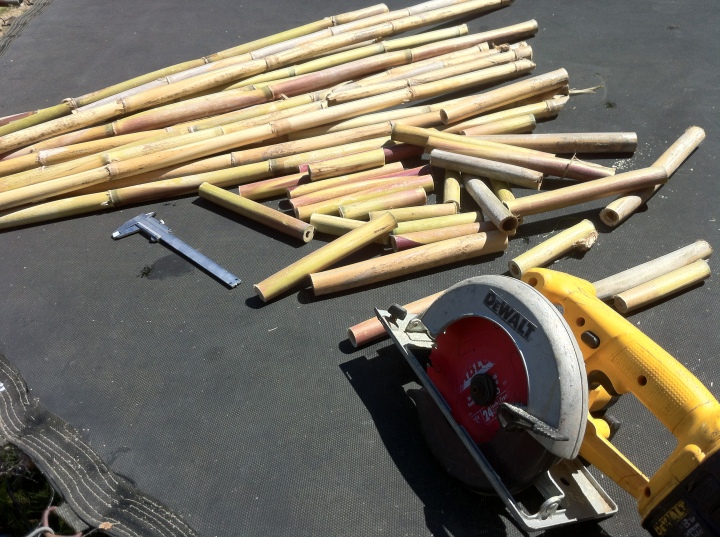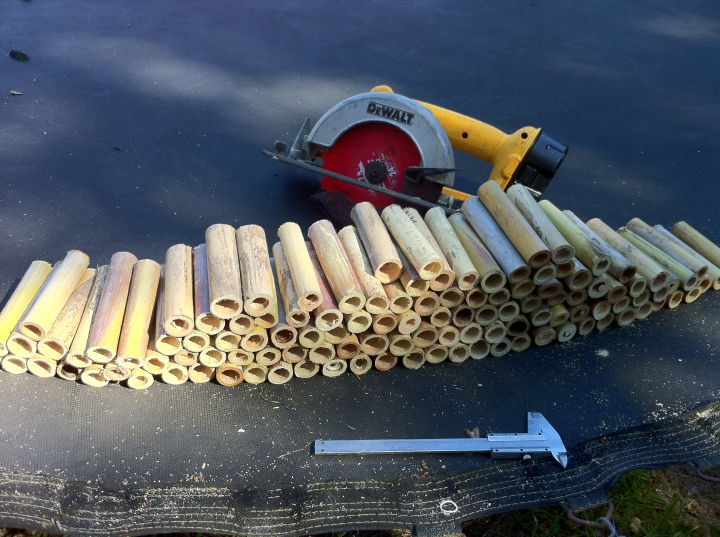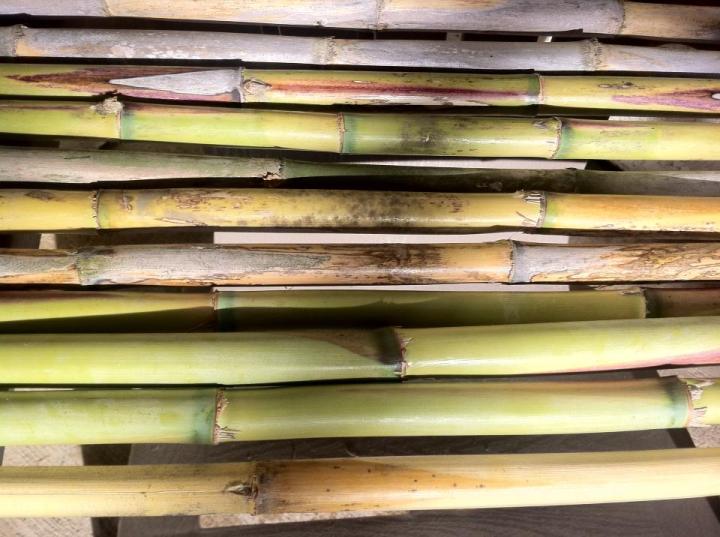Timing in reed making is essential in creating bassoon tone. Allowing rest between stages prevents the fibers of the cane from becoming stressed. It also seems in my experience that the longer the cane can rest, or the slower it is processed into a reed; the longer the reed lasts.This is especially true of reed blanks. Blanks are fully formed reeds that are still closed at the tip and have not been finished (above right).
So my process is something like this… Self harvested cane needs at least 6-8 months to fully dry out and stabilize. I put it in a big plastic storage bin without the lid and put it in the sun on sunny days.
Store bought tube cane that you split yourself should soak for at least 2 hours. Most people I know soak it over night, but it really just depends on how thick the cane is from that harvest. Just think that the water has to soak in to the very center of the cane so that the gouger doesn’t need to work so hard.
After gouging and profiling cane, I give it a few days to rest. This is the first big step for the cane and it has basically gone from a shoot of plant to a finely measured material. Depending on when I want to have new reeds I plan on letting this cane sit for 7 days, but if I am in a rush more like 4.
Gouged cane or gouged and profiled cane needs an hour to soak before working with it. Then I shape it, score it, fold it over, add a wire, and put it on a pressure peg. These pegs (pictured left) are removable and paired with a handle. Reeds are put on here and wrapped with rubber bands creating continuous pressure to form the tube. This rests for a full day (if you listen close you can hear the snap crackle pop)
Turning this into a blank is just adding two more wires, wrapping, reaming, and sealing. Blanks get better with time and for me I notice a big difference after 5 days of resting. This stabilizes the cane fibers and gives the blank time to acclimate. Also important in making reeds last longer is having multiple reeds to play in turns. Working with a batch of reeds in this way allows reeds to last for weeks instead of a few days.
There are some different techniques that I have read about in curing cane. I read an article in IDRS a few years ago from a bassoonist in texas. He soaks all of his cane in very strong tea. When cane is soaked the water becomes cloudy. These are little particle being stripped off of the fibers and released into the water. His theory was that by already having water fully saturated that it wouldn’t take so much out of the cane.
This is a great article from IDRS that touches a bit more on the preparation of cane in the early stages
https://www.idrs.org/publications/controlled/DR/JNL19/JNL19Cooper.pdf





